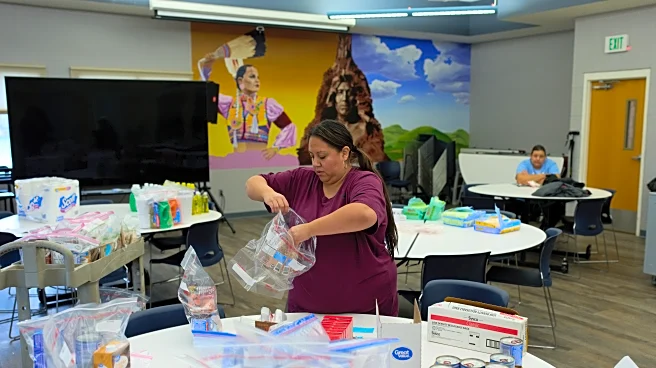What's Happening?
The Department of Education has concluded negotiations on President Trump's student-loan repayment overhaul, which aims to simplify repayment plans and impose new borrowing caps. The changes, set to take effect in July 2026, will replace existing income-driven
repayment plans with a standard repayment plan and a new Repayment Assistance Plan offering loan forgiveness after 30 years. The overhaul also introduces caps on graduate and professional borrowing, limiting graduate students to $20,500 annually or $100,000 over a lifetime, and professional students to $50,000 annually or $200,000 over a lifetime. These changes are part of Trump's spending legislation signed into law in July.
Why It's Important?
The overhaul represents a significant shift in student loan policy, potentially reducing the financial burden on borrowers by capping borrowing limits and simplifying repayment options. By eliminating the Grad PLUS program, the changes aim to hold universities accountable for outcomes and exert downward pressure on tuition costs. However, concerns have been raised about the impact on healthcare professions, as the new caps may restrict access to financial support for future providers. The changes could affect the availability of trained clinicians, impacting patient access to care and health outcomes.
What's Next?
The Department of Education will draft a rule based on the negotiated changes and publish it for public comment early next year. Existing borrowers will retain access to income-based repayment plans, while new borrowers after July 1, 2026, will enroll in the Repayment Assistance Plan. The department will continue to address concerns raised by stakeholders, particularly regarding the definition of professional students and the potential strain on healthcare professions. The implementation of these changes will be closely monitored to assess their impact on borrowers and the higher education landscape.
Beyond the Headlines
The overhaul could lead to long-term shifts in higher education financing, as universities adapt to new accountability measures and borrowing limits. The changes may encourage institutions to focus on cost-effective programs that deliver tangible outcomes for graduates. Additionally, the new repayment plans could influence the broader student loan market, potentially affecting interest rates and loan availability. The impact on healthcare professions highlights the need for balanced policy decisions that support essential services while managing financial risks.















